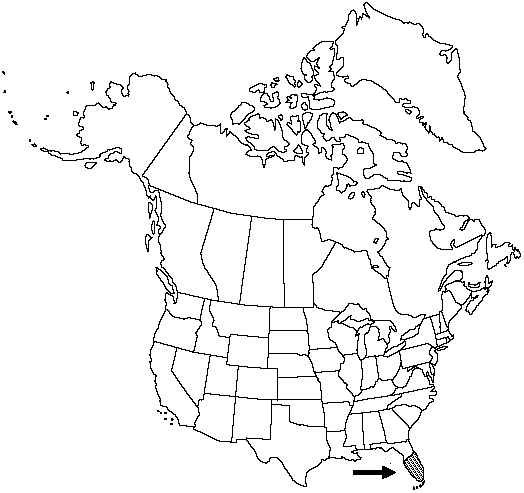Nephrolepis biserrata
Gen. Fil. plate 3. 1834.
Stem scales loosely appressed to spreading, concolored or bicolored with pale margins. Tubers absent. Leaves 2–22 × 0.3–3.5 dm. Petiole 0.2–5.4 dm, sparsely to moderately scaly; scales spreading, reddish to light-brown throughout (rarely with pale margins). Blade sparsely to densely scaly, glabrous or pubescent, hairs mostly on veins and abaxial, pale to light-brown, 0.2–0.7 mm. Rachis 1.8–17 dm, points of pinna attachment 7.5–35 mm apart; scales moderately spaced, pale-brown throughout. Central pinnae narrowly deltate to narrowly elliptic-lanceolate, 2.5–23 × 0.5–2 cm, base cuneate, truncate to auriculate-cordate acroscopically, rounded basiscopically, acroscopic lobe small and oblong or absent, margins biserrate to serrulate, apex attenuate; costae adaxially glabrous or densely hairy, hairs erect, pale, 0.3 mm. Indusia circular to horseshoe-shaped, peltate or attached at narrow sinus, 0.8–1.1 mm wide. 2n = 82.
Habitat: Terrestrial or less commonly epiphytic in forested, relatively wet habitats, e.g., swamps, but occasionally thickets, roadsides, or clearings
Elevation: 0 m
Distribution

Fla., Mexico, West Indies, Central America, South America, Africa, se Asia
Discussion
Some forms of Nephrolepis biserrata closely resemble N. multiflora in pinna shape and indument but lack the distinctively transparent-margined (i.e., bicolored) and persistent petiole scales of the latter species. Nephrolepis multiflora also has more appressed and darker-colored stem scales.
Selected References
None.
Lower Taxa
"dm" is not declared as a valid unit of measurement for this property."dm" is not declared as a valid unit of measurement for this property."/10lengthofblade" is not declared as a valid unit of measurement for this property."dm" is not declared as a valid unit of measurement for this property.